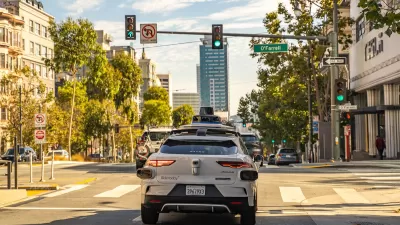New cars will be required to include automatic detection and braking technology for vehicles and pedestrians by 2029.

The U.S. Department of Transportation’s National Highway Traffic Safety Administration (NHTSA) issued its final update to federal regulations that govern vehicle design, mandating new features to protect pedestrians and prevent crashes. The new Federal Motor Vehicle Safety Standard calls for automatic emergency braking (AEB) technology for vehicles and pedestrians on all passenger cars and light trucks by 2029.
According to a press release from the NHTSA, “The new standard requires all cars be able to stop and avoid contact with a vehicle in front of them up to 62 miles per hour and that the systems must detect pedestrians in both daylight and darkness. In addition, the standard requires that the system apply the brakes automatically up to 90 mph when a collision with a lead vehicle is imminent, and up to 45 mph when a pedestrian is detected.” The technology is designed to detect pedestrians and vehicles during daylight and darker conditions.
The agency estimates this could save over 360 lives each year, based on fatality statistics. The standard fulfills a provision in the Bipartisan Infrastructure Law and advances the National Roadway Safety Strategy, a federal effort to reduce traffic fatalities and injuries.
FULL STORY: NHTSA Finalizes Key Safety Rule to Reduce Crashes and Save Lives

Maui's Vacation Rental Debate Turns Ugly
Verbal attacks, misinformation campaigns and fistfights plague a high-stakes debate to convert thousands of vacation rentals into long-term housing.

Planetizen Federal Action Tracker
A weekly monitor of how Trump’s orders and actions are impacting planners and planning in America.

In Urban Planning, AI Prompting Could be the New Design Thinking
Creativity has long been key to great urban design. What if we see AI as our new creative partner?

King County Supportive Housing Program Offers Hope for Unhoused Residents
The county is taking a ‘Housing First’ approach that prioritizes getting people into housing, then offering wraparound supportive services.

Researchers Use AI to Get Clearer Picture of US Housing
Analysts are using artificial intelligence to supercharge their research by allowing them to comb through data faster. Though these AI tools can be error prone, they save time and housing researchers are optimistic about the future.

Making Shared Micromobility More Inclusive
Cities and shared mobility system operators can do more to include people with disabilities in planning and operations, per a new report.
Urban Design for Planners 1: Software Tools
This six-course series explores essential urban design concepts using open source software and equips planners with the tools they need to participate fully in the urban design process.
Planning for Universal Design
Learn the tools for implementing Universal Design in planning regulations.
planning NEXT
Appalachian Highlands Housing Partners
Mpact (founded as Rail~Volution)
City of Camden Redevelopment Agency
City of Astoria
City of Portland
City of Laramie





























